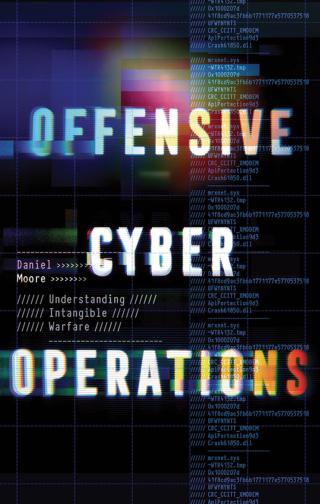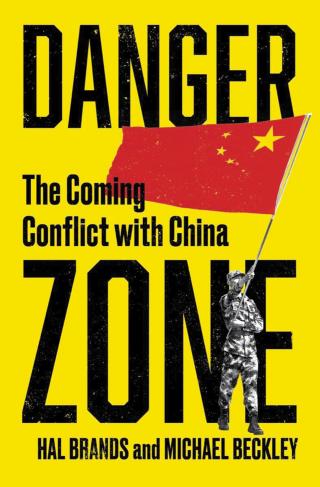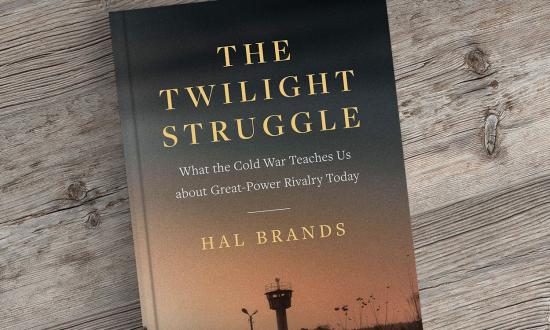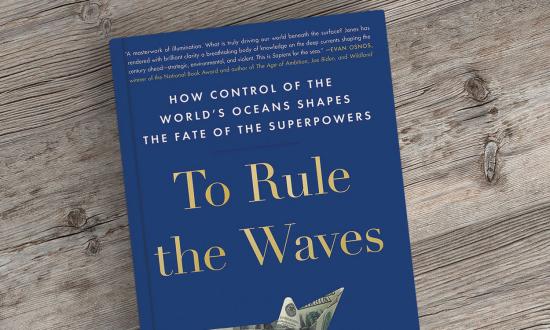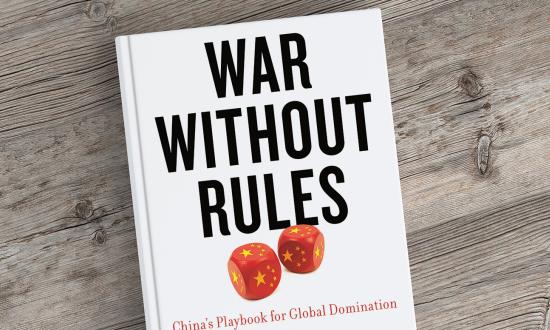Surrender
Brian O’Hare. Syracuse, NY: Syracuse University Press, 2022. 161 pp. $18.95.
Reviewed by Captain Bill Bray, U.S. Navy (Retired)
War is a wellspring for literature, as several writers who fought in Iraq and Afghanistan have recently shown. Former Marine Phil Klay’s short-story collection Redeployment (2014 National Book Award winner) about the Iraq War and former Navy SEAL Will Mackin’s short-story collection Bring Out the Dog (a 2020 PEN America Literary Award winner) about Afghanistan stand out. These wars were long, frustrating, and ended in defeat or, at best, in a place that seemed no better than at the war’s outset. Klay, Mackin, and others gave voice to thousands of veterans struggling to cope with this reality and the wounds—physical, psychological, and moral—that it wrought.
But what about literature from experiences in the era of the First Gulf War—the one that ended in mere weeks with ticker-tape parades and the ceremonial burial of the Vietnam Syndrome? The years 1990–91 seem like a much different time, when foreign intervention made a splashy comeback 15 years after Saigon fell and just a few years after books and films such as The Hunt for Red October and Top Gun thrived in the new zeitgeist of exalted American militarism. We were winners again.
With Surrender, First Gulf War veteran Brian O’Hare, a U.S. Naval Academy graduate and Marine Corps veteran, takes readers past the cheerleading and into the frustrating, often cynical, lonely, and irreverent world of young men barely past adolescence coping with war. Before the celebrations and triumph-thumping that dominated nearly every media outlet for months following the war’s end, young Marines experienced plenty of what their forebears endured in previous wars—what Marines colloquially term “the suck.” Keeping the discipline wired tight during months of mind-numbing tedium in the Saudi desert before and after a lightning ground offensive against a paper tiger was no small task. After the ground war ended, many of the characters in Surrender did not even try. Later stories from the time after the war and the characters’ service in the Marine Corps capture the alienation veterans encounter in a society that mostly knows war from video games, bad movies, and flyovers at football games.
O’Hare is a skilled craftsman. The writing is spare yet powerful, and the characters jump off the page, some reappearing in subsequent stories. The metaphors are rich but not overdone, and much of the dialogue has that coarse, caustic bite so familiar to those who have spent great chunks of their life deployed to foreign shores.
Surrender includes 17 stories and won the 2021 Veterans Writing Award, cosponsored by the Institute for Veterans and Military Families and Syracuse University Press. Militaries need to be manned, and wars sometimes need to be fought. Hero worship comes with that territory, a salve for men and women in uniform and the society that produces them. But it cannot erase the steep price war veterans pay, as O’Hare’s characters poignantly demonstrate. Excellent stories such as these will never change that reality, only remind us that the cost is real.
Captain Bray is a retired naval intelligence officer and the deputy editor-in-chief of Proceedings.
The Art Of War In An Age Of Peace: U.S. Grand Strategy And Resolute Restraint
Michael O’Hanlon, New Haven, CT: Yale University Press, 2021. 213 pp. Notes. Index. $28.
Reviewed by Lieutenant Lauren Larar, U.S. Navy
The past three decades have been characterized by four polarizing events: the fall of the Berlin Wall, the 9/11 attacks, a great recession, and the COVID-19 pandemic. Amid all the global variables, Michael O’Hanlon remained a constant in Washington, D.C., studying the implications of all these events across the world. O’Hanlon asserts that as China continues to rise and Russia grows politically restless, the United States must adopt a grand strategy that serves as an “overall plan for ensuring its national safety and security.” As a self-proclaimed skeptic regarding the use of force, his grand strategy proposes a concept of “resolute restraint.”
O’Hanlon begins by highlighting key events throughout history that have shaped today’s political climate. He examines the aftermath of events such as World War II and the Cold War’s influence on U.S. opinion on a grand strategic plan. O’Hanlon juxtaposes the opinion of the instinctually assertive “hawk” and the more conservative “dove,” but highlights that both schools of thought recognize the necessity for “American renewal at home.” In addition to a clear focus on internal growth, He argues that the United States should throttle back on campaigning for NATO expansion with regard to former Soviet states, downscale North Korean nuclear capability, craft a more conservative warfighting outlook in response to known aggressors, and negotiate a
more substantial nuclear agreement with Iran.
Historical precedents serve as the basis for many of O’Hanlon’s conclusions, such as his assertion that the world is, comparatively speaking, in “an age of great power peace.” This idea introduces a fragile connotation that strengthens the need for O’Hanlon’s proposed restraint. He cautions against overreacting and warns that getting too engulfed as a nation in a “short-term crisis” will contribute to a misunderstanding of the long-term environment. He declares that “part of the art of war is knowing when not to fight,” suggesting the strategic employment of alliances, economics, and diplomacy is an adequate alternative.
Resolute restraint must be applied differently to various world players, and O’Hanlon examines how this strategy should be implemented across four different regions. He begins with a close examination of Europe and Russia, suggesting that a halt in NATO expansion could create a new security order in the region. Ultimately, O’Hanlon cautions that the looming threat posed by Russia should not be sidelined by concerns about China. Instead, NATO and the EU must continue to press on military buildups and economic sanctions. However, China and the entire Pacific region also demand a significant deal of consideration as “small-scale skirmishes” over territorial claims in the region can escalate quickly, resulting in a massive disruption to the world’s economy as key shipping routes become inaccessible.
The Korean peninsula is an important U.S. military outpost that demands focus on preventing war as well as minimizing the threat of nuclear weapons. The Middle East will continue to warrant U.S. interest not only because of its role as one of the world’s energy suppliers, but also because of the looming presence of terrorism, interstate war, and nuclear arms.
O’Hanlon claims the Unites States must also broaden its scope and prepare for more unconventional threats in the form of biological weapons, nuclear weapons, climate change, digital technology, and the breakdown of America’s internal cohesion. He refers to these threats as “the other 4+1” and highlights that the “+1” is a unique challenge exclusive to the United States. He proceeds by clearly defining the U.S. armed forces’ role in the bigger picture and dictating that rather than a larger force, the United States needs an innovative, modern, and tactically advanced force.
Overall, strengthening U.S. domestic and economic policy is at the forefront of O’Hanlon’s grand strategy. In addition, he emphasizes the importance of preserving the global rules-based order. He encourages the United States to promote democracy, but, more than anything, to exercise resolute restraint with a focused reluctance to “draw first blood.”
The Art of War in an Age of Peace takes a thought-provoking approach in introducing a new concept of U.S. grand strategy. This book does not provide a one-size-fits-all solution, but rather opens the discussion for readers to consider tailoring resolute restraint across all modern threats.
Lieutenant Larar is a surface warfare officer serving on board the USS McCampbell (DDG-85). She is a graduate of the U.S. Naval Academy.
Offensive Cyber Operations: Understanding Intangible Warfare
Daniel Moore. Oxford, UK: Oxford University Press, 2022. 328 pp. Notes. Biblio. Index. $49.95.
Reviewed by Lieutenant Commander Eric Seligman, U.S. Navy Reserve
Cyberwarfare is typically viewed as opaque and technically dense. Articles and books on this topic are often written from a strategic level, focusing on newsworthy global events, or from a technologist’s perspective, narrowing in on specific exploits and attacks. Author Daniel Moore’s Offensive Cyber Operations fills the large space between these two viewpoints, presenting a balanced operational perspective on cyberwarfare.
The book spends much of its first half making Moore’s case for an evolution in thinking about cyberwarfare. Moore advocates for including a new term dubbed “intangible warfare” to encompass most forms of nonkinetic effects. Beyond the intangible warfare concept, He goes to great lengths to enumerate the various phases within offensive cyber operations, as well as other constructs. Most of these are well-reasoned attempts to change the paradigm of thinking around cyberwarfare; however, some of Moore’s constructs fall flat.
Throughout much of the book Moore discusses the inherent dichotomy between what he terms “presence-based” operations, and “event-based” operations. It is his attempt to disambiguate and make distinct these two activities in which lies the book’s most significant shortcoming. As defined by the author, presence-based operations are “lengthy intrusions that culminate in an attack,” whereas event-based operations represent “immediate attacks against networks and equipment.” The issue with this interpretation is that Moore either conflates electronic warfare attacks with cyberattacks or overly simplifies much of the preparation required to initiate these event-based attacks. Most who have participated in this form of warfare would say the majority of true event-based cyber attacks require significant presence-based operations for execution.
The latter half of Offensive Cyber Operations is primarily focused on four key cyberwarfare players, namely, the United States, Russia, China, and Iran. Again, Moore’s research shines through, and he presents an informative take on the various doctrinal pros and cons for each nation’s offensive cyber programs. Moore’s disassembly of these programs is instructive, and the retelling of related events compelling.
However, some of the conclusions Moore reaches may be considered controversial, to say the least. Most remarkable, in regard to U.S. doctrine, he advocates for the elimination of cyberspace as a domain of warfare. The book’s rationale for this reversal is twofold: that cyberspace thoroughly permeates all other domains of warfare, and that creating a specific cyberspace domain silos off the related capabilities. Moore misses the mark here, as the first half of his argument is precisely why the domain was created in the first place. The second half of the argument speaks to the struggles all domain-specific platforms have—namely, the difficulty of integration into joint operations and effects.
Moore concludes his work with an overview of technologies likely to soon change the face of cyberwarfare (artificial intelligence featuring most prominently), and a concise comparative summary of the countries highlighted in earlier chapters. For anyone keeping score of nation-states’ cyber abilities, the book’s penultimate figure is sure to be an oft quoted reference.
Ultimately, Offensive Cyber Operations is a refreshing entry into the ever-growing body of work on cyberwarfare. Instead of an overview of events, the book seeks to delve into the specifics of operations and derive insights into how they can be improved, as well as where they might evolve in the future. As long as one takes into account some of the shortcomings of Moore’s conclusions, this book would serve well as a primer for any military planner or leader seeking to have greater insight into the opaque world of cyberwarfare.
Lieutenant Commander Seligman is a reservist information professional, currently supporting NR Commander 3rd Fleet, N2/39 operations. In his civilian capacity, he manages offensive cybersecurity operations for a Fortune 500 company.
Danger Zone: The Coming Conflict with China
Hal Brands and Michael Beckley. New York: W. W. Norton & Company, 2022. 304 pp. Notes. Biblio. Index. $30.
Reviewed by Lieutenant Commander Shane Halton, U.S. Navy
Beginning in 2015, the U.S. publishing landscape for books about China—and specifically the China-U.S. relationship—changed dramatically. “Chimerica”—a vision of intertwined economic powers growing peacefully alongside one another—was out, and great power competitions, hundred-year marathons, and new cold wars were in.
There are myriad reasons why this change happened when it did, ranging from a foreign policy shift in U.S. domestic politics following the election of President Donald Trump in 2016 to the more aggressive actions by the Chinese Communist Party (CCP) across a host of issues ranging from Taiwan, to border disputes with India, to COVID-19, to the CCP’s detention and prosecution of China’s Uighur ethnic minority. In this context, the most recent fracas over House Speaker Nancy Pelosi’s visit to Taiwan in August 2022 looks like another symptom of worsening relations rather than its cause. At the time of this writing, the geopolitical situation in the western Pacific remains tense.
The English-language literature generated since China-U.S. relations began to deteriorate has run the gamut in terms of writing quality and usefulness to policymakers. Generally, I recommend avoiding anything with “Dragon,” “Wall,” or “Red” in the title. However, having recently finished Hal Brands’ magisterial analysis of the (first) Cold War, The Twilight Struggle: What the Cold War Teaches Us About Great Power Rivalry Today (Yale University Press, 2022), I was excited about Danger Zone despite the questionable choice of title.
The thesis-—that China is dangerous to world peace not because it is moving from strength, to strength but because it may have peaked economically and demographically, creating a situation in which its leaders might act more aggressively to lock in great power gains—is novel and compelling. The book opens with a vivid depiction of what the worst-case scenario would look like, with the United States getting surprised (and bloodied) in the opening salvos of a Chinese invasion of Taiwan that spirals into a larger regional hot war.
The rest of the book, however, fails to live up to those exciting first few chapters. The major issue seems to be that the authors cannot make their policy recommendations (hawkish prompts for the United Sates to push against China more aggressively along a number of diplomatic, military, and economic fronts) square with their thesis (that the United States needs to prioritize getting through the next “danger zone” decade in which China is still strong but fading, and that avoiding a hot war should be everyone’s number one priority). The authors instead fall back on generalized strategy aphorisms such as “probe for weakness but don’t be too aggressive” and “be strategically focused but tactically flexible,” which are not novel or useful for readers trying to suss out what the United States should or should not be doing during this period of geopolitical turmoil.
This book ultimately fails to break out from the current pack of great power rivalry literature and probably would have worked better as a long article (again, the core idea and analysis of Chinese economic and demographic dynamics is strong). I recommend checking out Ryan Haas’s Stronger: Adapting America’s China Strategy in an Age of Competitive Interdependence (Yale University Press, 2021) instead.
Lieutenant Commander Halton is an intelligence officer currently serving on the USS Carl Vinson (CVN-70). He has previously served on exchange with the Royal Australian Navy and as a requirements officer at the Navy’s Digital Warfare Office.





